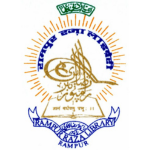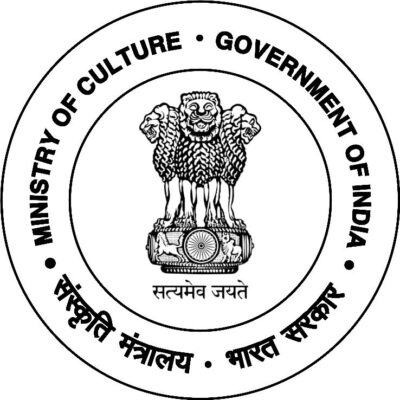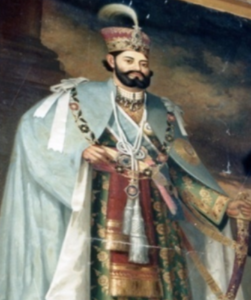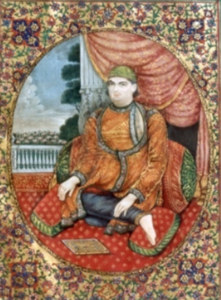After the independence and merger of the state in the union of india, the library was brought under the management of a trust, which was created on august 6th, 1951 which continued till june 1975. Prof. S. Nurul hasan, the then minister of state for education and scientific research, government of india visited the library several times and was worried to see the gradually deteriorating condition of the valuable collection & library. With the efforts of him & nawab murtaza ali khan, the government of india on 1st july 1975 under rampur raza library act no. 22, declared the library as an institution of national importance by taking it under its jurisdiction and took important steps to improve the management & provided financial assistance. The affairs of the library are managed by the rampur raza library board, which has been set up under section 4(2) of the act. It is the governing body with honourable governor of the uttar pradesh as the chairman. There is a provision for twelve members including one member of the erstwhile ruling family of the nawabs. The board is represented by distinguished historians, scholars of arabic, persian and urdu literature beside officials of the central and state governments concerned with the affairs of the library. Director of the library is the member secretary of rampur raza library board who is responsible for convening the meetings of board and sub-committee’s meetings and implementation of the decisions taken by the board and sub-committees. In the ninth meeting of rampur raza library board held on 23rd february 1985 at raj bhavan, lucknow under the chairmanship of the then hon’ble governor of uttar pradesh, the board constituted a committee know as “staffing pattern committee” to make recommendations for reconstructing the staff strength of the library to enable it to discharge efficiently the functions enjoined upon it namely services to scholars and conservation of its rich cultural heritage for posterity. The meeting of the staffing pattern committee was held on 19th may 1985 under the chairmanship of nawab zulfiqar ali khan at rampur. The committee had recommended that the proposed set up of the library should consist of three functional units namely: (i) research & reference unit, (ii) conservation unit and (iii) administrative unit. The committee also recommended creation of 33 posts in pay scales of central government in various categories. The recommendations were being put up for the consideration of the board in its meeting held on 13th december 1985 which were approved by the board. The proposal of creation of 33 posts was recommended to central government for approval. The government of india approved it and sanctioned 31 posts out of 33 posts from 10th december 1986 to rampur raza library.
The recruitment rules & regulations for these 31 posts were undergone ammendmends as when required. This year also, these are amended by the Government of India and published in the Gazette of India on 17th August 2022. According to which at present there are following posts in Rampur Raza Library:
| S.No. | Name of the Post | No. of Posts |
|---|---|---|
| 1 | Director | 1 |
| 2 | Library & Information Officer | 1 |
| 3 | Assistant Library & Information Officer | 2 |
| 4 | Library & Information Assistant | 2 |
| 5 | Senior Technical Restorer | 2 |
| 6 | Head Clerk | 1 |
| 7 | Technical Restorer | 2 |
| 8 | Upper Division Clerk | 1 |
| 9 | Library Clerk | 2 |
| 10 | Lower Division Clerk | 2 |
| 11 | Library Attendant | 6 |
| 12 | M.T.S. | 9 |
| Total | 31 | |
Seven Significant Historical Events
Seven major events have shaped rampur’s history. The first was the founding of the library on october 7, 1774. The second, in 1905, was the construction of hamid manzil, its eight minarets symbolizing four faiths: a temple, gurdwara, church, and mosque. Third, in 1949, the rampur princely state merged with the indian union. Fourth, a trust for the rampur raza library was formed in 1957, and the library moved to hamid manzil. Fifth, the rampur raza library parliament act of 1975 declared the library an institution of national importance. Finally, on october 15, 2024, the fort complex’s land and buildings were designated for transfer to the rampur raza library. The future plans of the rampur raza library and museum for this land and buildings are as follows: Building & development of a world class multicultural & multilingual research & translation centre covering all the languages of the world. Developing a state of art museum at the Hamid Manzil of Rampur Raza Library. Building & development of world class advance studies centre. A state of art cultural centre covering different cultures of the world mainly art, music and dance. Building & development of a tourist centre with world famous one of the most beautiful building in the world Hamid Manzil as centre connecting Nainital, Jim Corbett National Park, Kainchi Dham and other attracting places nearby. Building of state of art reading hall for youth & public of Rampur. Building of residual facilities for scholars in the premises of Rampur Qila arriving from across the world.
Nawab Faizullah Khan
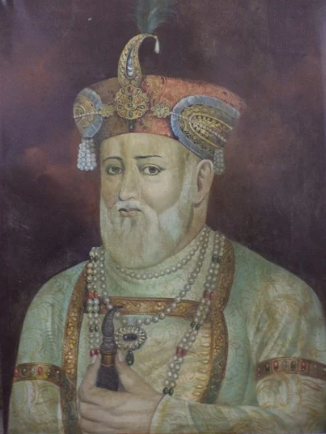
The Rampur Raza Library is an institution of Indo-Islamic learning and treasure house of arts which was founded by the first ruler of Rampur, Nawab Faizullah Khan in 1774. Rampur is the headquarter of a district of same name in Uttar Pradesh which was known as ‘Riyasat Rampur’ before independence. He ruled the State up to 1794 and formed the nucleus of the Library through his personal collection of valuable and rare manuscripts, historical documents, books in different languages and precious paintings kept in the Royal Toshakhana. The Nawabs of Rampur State were great patrons of art, scholars, poets, painters, calligraphers and musicians.
Nawab Muhammad Ali
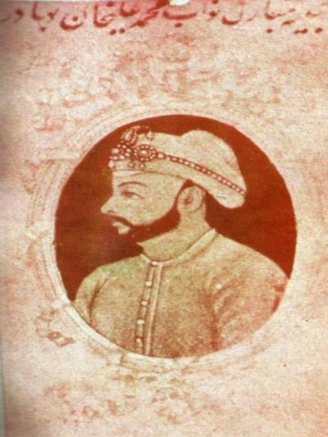
Nawab Muhammad Ali Khan, son of Nawab Faizullah Khan ascended the throne on July 17th, 1794 at the age of 43 years. He ruled the state for only twenty-four days. He was not popular among his family and Rohilas because of his harsh behaviour. Nawab Ghulam Muhammad Khan evicted him and ascended the throne.
Nawab Ghulam Muhammad

Nawab Ghulam Muhammad Khan became the Nawab of Rampur at the age of 33 years on August 10th, 1794 and ruled only for three months and twenty two days. To retain his Nawabi state, he fought a battle against British government and Nawab Asifuddaulah of Awadh in Bhitaura and got defeated. He was taken to Thakurdwara, then to Banaras in the custody of British Government. From Banaras, he left for Hajj pilgrimage. After returning from Hajj, he stayed in Kangra, Punjab. Raja Sansar Chand provided him the best hospitality with full respect at his place. He shed his soul on February 18th, 1833.
Nawab Ahmed Ali Khan
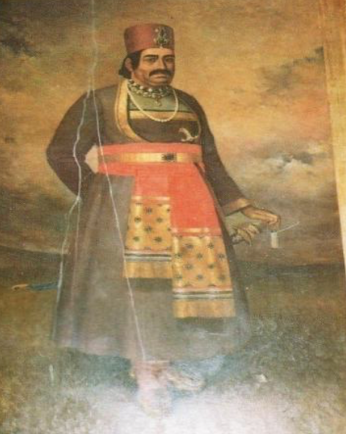
The fourth Nawab of Rampur State, Nawab Ahmed Ali Khan ascended the throne at the age of nine years on November 29th, 1794. Nawab Nasrullah Khan was appointed his Regent. Nawab Ahmad Ali Khan was a poet with a pen name ‘Rind’ and took keen interest in fine arts. He was fond of hunting, shooting, music and dance. During the reign of Nawab Ahmad Ali Khan (1794–1840) notable additions were made to the collection.
Nawab Muhammad Saeed Khan

In his period, Maulvi Ghayasuddin Khan compiled Ghayas-ul-Lughat, a Persian dictionary. The edifices of ‘Benazir’ and ‘Badr-i-Munir’ were constructed during his time. Nawab Muhammad Saeed Khan (1840–1855) was a dynamic ruler. He created a separate department of the library and shifted the collection to new premises. He also appointed Allama Yousuf Ali Mehvi (an Afghan scholar) to organize the collection into a renowned Kutub Khana. He also invited well-known calligraphers, illuminators and binders from Kashmir and other parts of India. The Nawab got prepared a seal with the following Persian inscription:
‘Hast in muhr bar Kutub Khana Wali-i-Rampur farzana A.H. 1268 (1852 A.D)’
Nawab Yusuf Ali Khan

Nawab Yusuf Ali Khan ascended the throne on April 1st, 1855 and took keen interest in art and literature, being himself a poet with pen name ‘Nazim’. He took guidance from the celebrated poet Mirza Ghalib, who was rewarded with a stipend of Rs. 200 per month. After the historic struggle of 1857, a large number of eminent scholars, poets, writers migrated from Delhi to Rampur. Ram Babu Saxena, the author of Tarikh-i-Adab-i-Urdu, had written “Nawab made Urdu poetry Ganga-Jamuni by bringing together the poets of Delhi & Lucknow.” A beautiful manuscript of Nazim’s poetry is preserved in Raza Library which has been made available to poetry lovers, by publishing it in original form. The Nawab ruled for 10 years and died in 1865 AD
Nawab Kalbe Ali Khan

Nawab Yusuf Ali Khan ascended the throne on April 1st, 1855 and took keen interest in art and literature, being himself a poet with pen name ‘Nazim’. He took guidance from the celebrated poet Mirza Ghalib, who was rewarded with a stipend of Rs. 200 per month. After the historic struggle of 1857, a large number of eminent scholars, poets, writers migrated from Delhi to Rampur. Ram Babu Saxena, the author of Tarikh-i-Adab-i-Urdu, had written “Nawab made Urdu poetry Ganga-Jamuni by bringing together the poets of Delhi & Lucknow.” A beautiful manuscript of Nazim’s poetry is preserved in Raza Library which has been made available to poetry lovers, by publishing it in original form. The Nawab ruled for 10 years and died in 1865 AD
Nawab Mushtaq Ali Khan
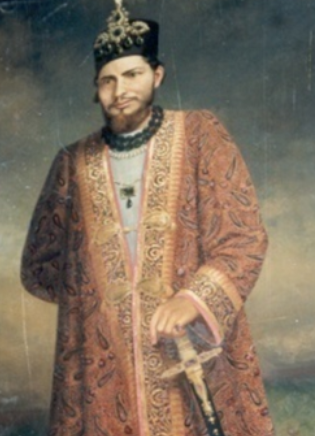
The next Nawab Mushtaq Ali Khan (1887–1889) being disabled, General Azimuddin Khan became regent of the state in 1887. He appointed a managing committee and allocated budget for the maintenance and development of the library. Keeping in mind the reputation and progress of the library, he laid the foundation stone of the separate building.
Nawab Hamid Ali Khan
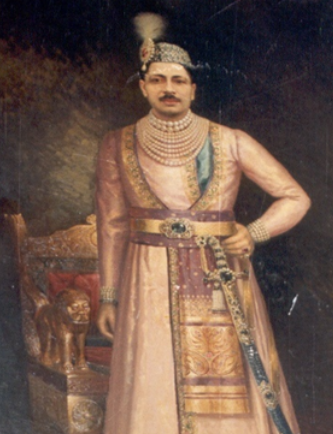
Nawab Hamid Ali Khan (1889–1930) traveled extensively before ascending to the throne. He was highly educated and was remarkably known for his love of constructing impressive palaces and office buildings in Rampur city. The building which was laid by Nawab Mushtaq Ali Khan was inaugurated by Nawab Hamid Ali Khan with great pomp on 31st March 1892 and transferred the library collection from Toshakhana to this building (present Govt. I.T.I.). He also opened the library to scholars and extended facilities to senior academicians and research scholars of India and abroad. He constructed a magnificent palace inside the fort of Rampur in Indo-European style named ‘Hamid Manzil’ which now houses the Rampur Raza Library since 1957. He was a connoisseur of art and music and added much to the collection and introduced certain reforms in the management of the library. During his ruling period, Hakim Ajmal Khan, Maulvi Najmul Ghani Khan and Hafiz Ahmad Ali Shauq managed the library. They served the library and also prepared the catalogues of Arabic manuscripts & printed books in Urdu which were published by Library in 1902 and 1928. This catalogue is unavailable and it is republished (only vol. 2) due to its importance. The unpublished catalogues are under progress.
Nawab Raza Ali Khan
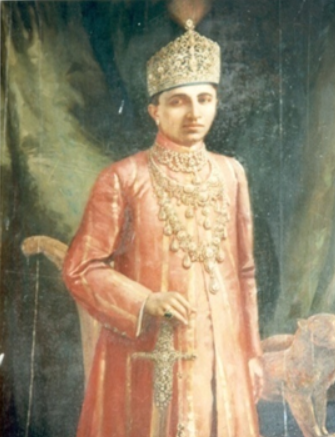
Nawab Raza Ali Khan (1930–1966) became the Ruler on June 30th, 1930. He was decorated with both Indian and foreign education. He took unprecedented interest in promoting the education and built the schools & colleges in the Rampur city. He was also a lover of Indian music for which he purchased several rare manuscripts and books on classical music from India and abroad. He was an eminent Hindi poet with pen-name ‘Rajaa’ and his musical composition named ‘Sangeet Sagar’ is preserved in the library. He lavishly patronised, art, music and culture at Rampur.
